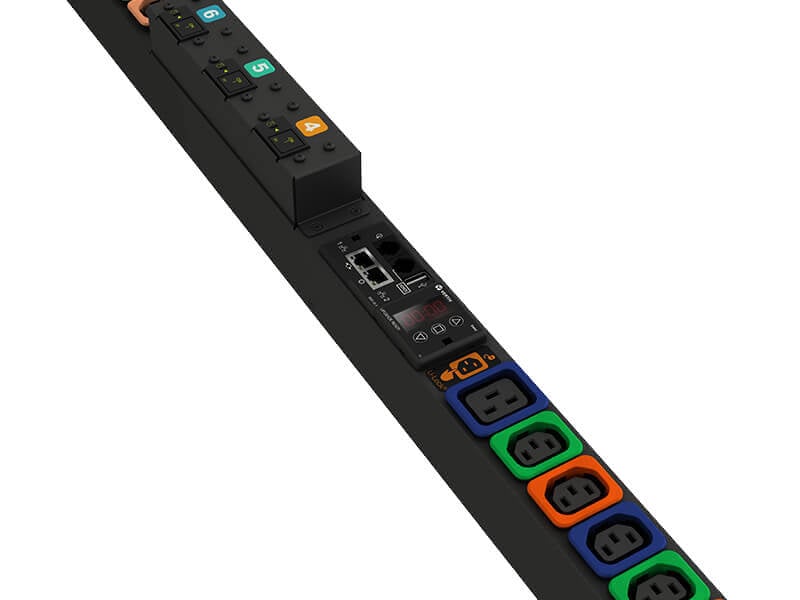The accelerating growth of internet-connected devices and new automated applications requiring local real-time computing power continues to drive the need for the edge. While cloud computing drove the development of major data centers, edge computing brings back the distributed IT model. With a wide range of smaller, edge-of-network sites near the data consumption, they must be evaluated with the same level of scrutiny as a larger, core data center.
So what makes an edge site different?
Like enterprise, colocation, and cloud data centers, edge infrastructure is based on a network of mission-critical computing and storage resources but at a fraction of the scale and often dedicated to a specific function or application. The types of environments range anywhere from a micro data center to an intermediate or main distribution frame (IDF/MDF) closet, to outdoor enclosures and containers. These environments often require customized power, cooling, monitoring, and cabinet configurations tailored to meet the needs of the local geography and the unique application.
One of the key considerations for edge infrastructure is power distribution to the mission-critical equipment handling the computing and processing of data as it is relayed back to the cloud data center in real time.
Rack power distribution units (rPDUs) are the backbone of edge infrastructure. Manufacturers often have a vast range of standard and custom-engineered rPDU options. With thousands of configurations available, it can be a daunting task to select the most appropriate rPDU for your unique needs.
In order to simplify the rPDU selection process, here are eight key rPDU features you should consider when designing your edge infrastructure:
1. Real-time rack power consumption monitoring and alarming per outlet
Because edge sites are not adjoined to the high-performance data center facility, monitoring power and general environmental conditions becomes even more critical for ensuring uptime and site reliability. Intelligent rPDUs come equipped with an embedded web server, providing remote access to power metrics including voltage, current, real power, apparent power, and power factor. In order to prevent circuit overloads or other power-related downtimes, IT administrators can set alarm thresholds to identify potential problems and receive alerts via email, email-to-SMS, and SNMP traps when a specified threshold is breached. By monitoring these critical variables, you can properly balance power loads, evaluate energy usage trends, and monitor power redundancy — all to ensure maximum uptime.
Most intelligent rPDUs support common network protocols to easily integrate with network management or data center infrastructure management (DCIM) software. This would allow you to view multiple rPDUs across various sites from a single pane of glass.
2. Remote switching
Edge sites are commonly deployed in remote areas with little to no local IT expertise available to handle unplanned downtime. It can be especially stressful to have to deal with a power consumption overload or an unresponsive server from afar. Switched rPDUs can enable remote control of power outlets, acting as a local touchpoint with built-in reboot capabilities. No longer does an employee have to travel to a remote site, reset the power manually, and stay nearby to test and ensure the device is working properly. Additionally, outlets may also be turned off and locked out in order to avoid unauthorized usage.
3. Real-time environmental monitoring and alarming
Due to the remote nature of most edge sites, they are especially susceptible to a multitude of physical and environmental factors that other data centers may not experience. While it is common to have robust monitoring and alerting capabilities embedded within critical systems like a computer room air conditioner (CRAC), an uninterruptible power supply (UPS), and even servers, environmental factors surrounding the critical infrastructure are often ignored, and many data center managers don’t know there’s an issue until it becomes problematic. Environmental factors like heat, humidity, and moisture can pose a severe threat to mission-critical infrastructure. These issues can be minimized by incorporating a network of environmental sensors to collect actionable data and alert users of potential threats.
When selecting a rPDU, identify the type and quantity of sensors required to strategically monitor the edge environment and ensure the rPDU has the capability and input capacity to accommodate each sensor. Most edge sites will require multiple sensors, including those for temperature and humidity, water, smoke, and door position. These sensors connect back to the rPDU, allowing you to bring parameters in line with designated thresholds and configure alarming.
4. Cascading or daisy-chaining to minimize ethernet drops
The number of critical systems necessary at an edge site can pose a major challenge when it comes to managing and maintaining a high number of IP devices. Some intelligent rPDUs can alleviate much of this burden by offering daisy-chaining or cascading capabilities in which multiple devices can share network connectivity and a management interface.
Vendors that manufacture a full suite of infrastructure hardware are likely to offer interoperability between the different types of devices they manufacture, such as UPS units, cooling equipment, rPDUs, and other critical assets housed at an edge site. With the right vendor, there are endless possibilities in the potential automation for data configuration, grouping, device management, and maintenance. A single device can be designated as the aggregator and controller for all connected downstream devices, simplifying remote management.
When selecting a rPDU, it is important to identify the cascading capabilities and any connectivity limitations. Paying close attention to this feature can significantly help simplify the deployment, management, and maintenance of edge infrastructure.
5. Hybrid C13/C19 outlets
Edge site power requirements can be difficult to predict and pose a challenge when selecting rPDUs, especially when trying to standardize on a single model across numerous locations. Traditionally, data center managers have had to identify the plug type for each piece of rack equipment per facility, often having to determine the type and number of outlets required before rack equipment decisions can be made. With the introduction of hybrid C13/C19 outlets, this is now a moot point.
6. Hot-swappable and upgradeable communication cards to allow a rapid change in the field
Many critical data center systems offer hot-swappable communication cards that can be replaced instantly upon failure without having to plan for downtime. Some rPDU vendors are changing the playing field and taking this capability a step further by enabling IT administrators to install upgraded communication cards with newer technology and enhanced features. Upgradeability allows businesses to adapt to changes in technology and rise above the competition while extending the longevity of the rPDU and maximizing return on investment.
7. Colors to indicate different power feeds and alternating phases
For edge instances that require multiple rPDUs, it would be beneficial to color-code outlets for prompt identification of A and B power feeds, which eliminates confusion and reduces the risk of human error. This ability to easily identify the different circuits and phases simplifies load balancing when deploying IT equipment. Additionally, users can identify unequal power distribution at a glance to avoid unintentional tripping of breakers.
8. High temperature grade based on environment
As edge compute sites exists in varying forms and environments, it will be important to consider the operating temperature range of all IT equipment with rPDUs included. For high-temperature environments, it will be critical to select ruggedized rPDUs designed to operate in such environments. For example, some rPDUs can operate at ambient temperature up to 60 degrees Celsius (140 F).
When designing your edge data center, it is vital to carefully select a reliable rPDU that can maximize uptime for your applications.






